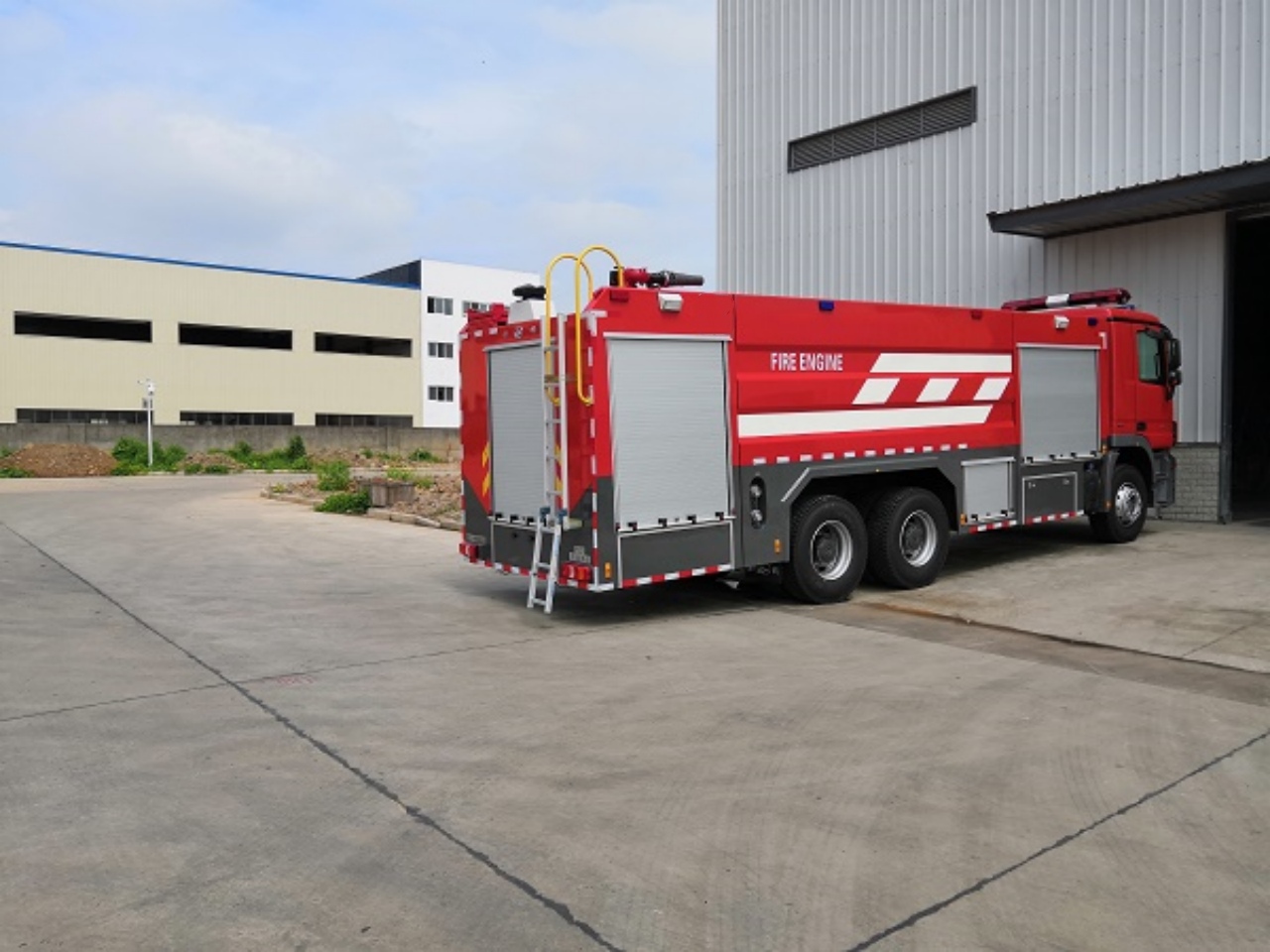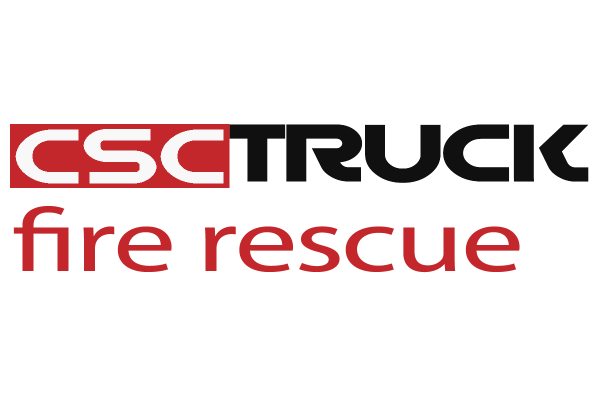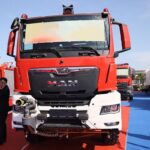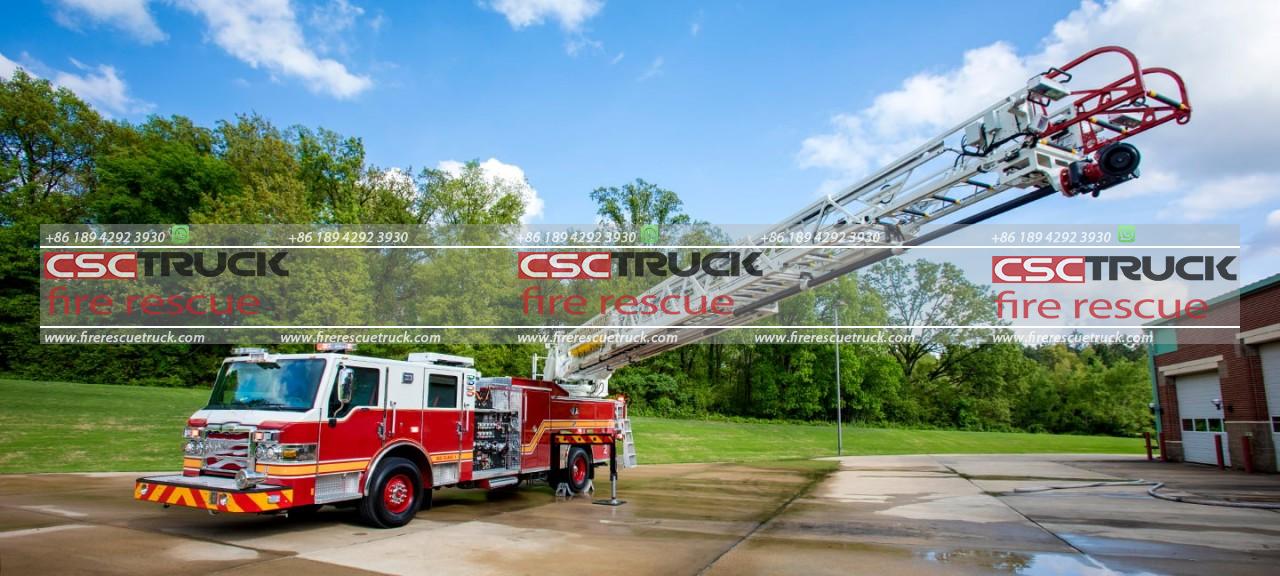Firefighting vehicles come in different types, each designed for a specific role in fire suppression and emergency response. 2 commonly used terms in fire departments worldwide are “fire tender” and “fire tanker.” While both play essential roles in firefighting operations, they differ in terms of function, design, and capabilities. This article explores the key differences between fire tenders and fire tankers to help understand their distinct roles in emergency services.
1. Definition and Purpose
Fire Tender
A fire tender, also known as a fire engine or pumper truck, is a primary firefighting vehicle equipped with a water pump, hose connections, and firefighting tools. Its main function is to transport firefighters and essential firefighting equipment to the scene and provide an immediate water supply for extinguishing fires. Fire tenders are the backbone of firefighting operations and are often stationed at fire departments ready for rapid deployment.
Fire Tanker
A fire tanker, sometimes called a water tender, is a specialized firefighting vehicle designed primarily to transport large quantities of water to areas where hydrants or water sources are unavailable. Fire tankers are essential in rural firefighting, where access to a continuous water supply may be limited. Their primary role is to deliver and supply water to fire tenders or directly assist in firefighting operations.
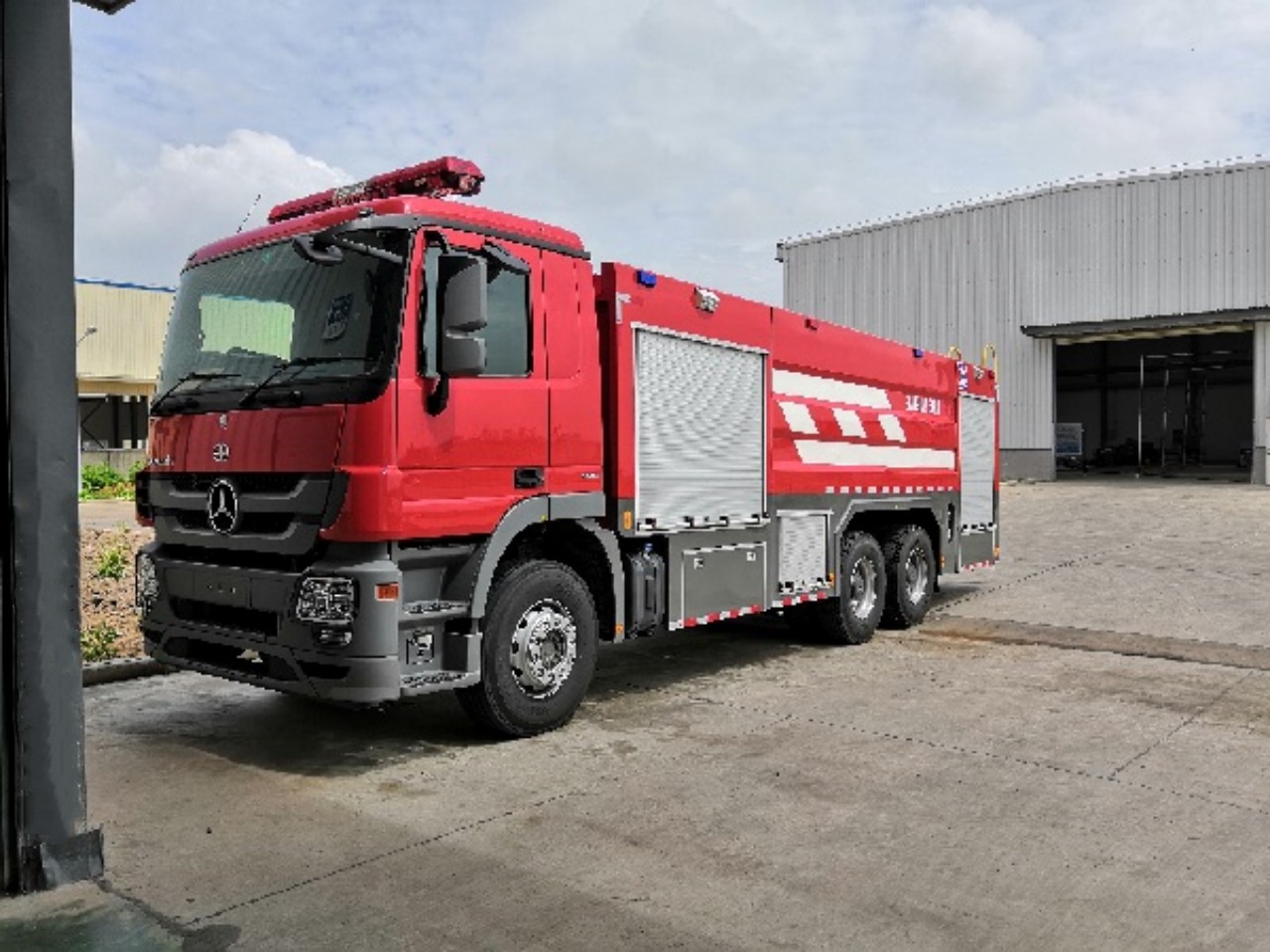
2. Design and Equipment
Fire Tender Design and Features
Fire tenders are built with a combination of essential firefighting tools and equipment, including:
- A powerful water pump (typically ranging from 750 to 2,500 gallons per minute)
- Water tank (500 to 1,500 gallons capacity)
- Hose reels and connections
- Ladders for rescue and access
- Specialized firefighting foam systems
- Emergency medical equipment
- Crew cab for firefighters
These vehicles are designed to arrive quickly at the fire scene and initiate firefighting efforts using onboard water and connections to external water sources.
Fire Tanker Design and Features
Fire tankers are primarily designed to carry large volumes of water and have features such as:
- Large-capacity water tanks (typically 1,000 to 5,000 gallons or more)
- Water dump valves for rapid unloading
- Portable drop tanks to hold water at the fire scene
- Some models may include a small pump for limited firefighting capabilities
- Minimal hose and firefighting tools compared to a fire tender
Fire tankers are not built for high-speed response but rather for supporting operations by ensuring a steady water supply.
3. Operational Roles and Deployment
Fire Tender Operations
- Arrives at the scene first to assess the fire and begin firefighting.
- Uses its pump to distribute water through hoses for fire suppression.
- Connects to fire hydrants or water tankers for a continuous water supply.
- Deploys firefighters to rescue operations, ventilation, and structural firefighting.
Fire Tanker Operations
- Transports water to the fire scene in areas without hydrants.
- Supplies fire tenders with additional water to sustain firefighting efforts.
- Establishes water relay operations by shuttling between a water source and the fire.
- Sometimes acts as a static water source by using drop tanks.
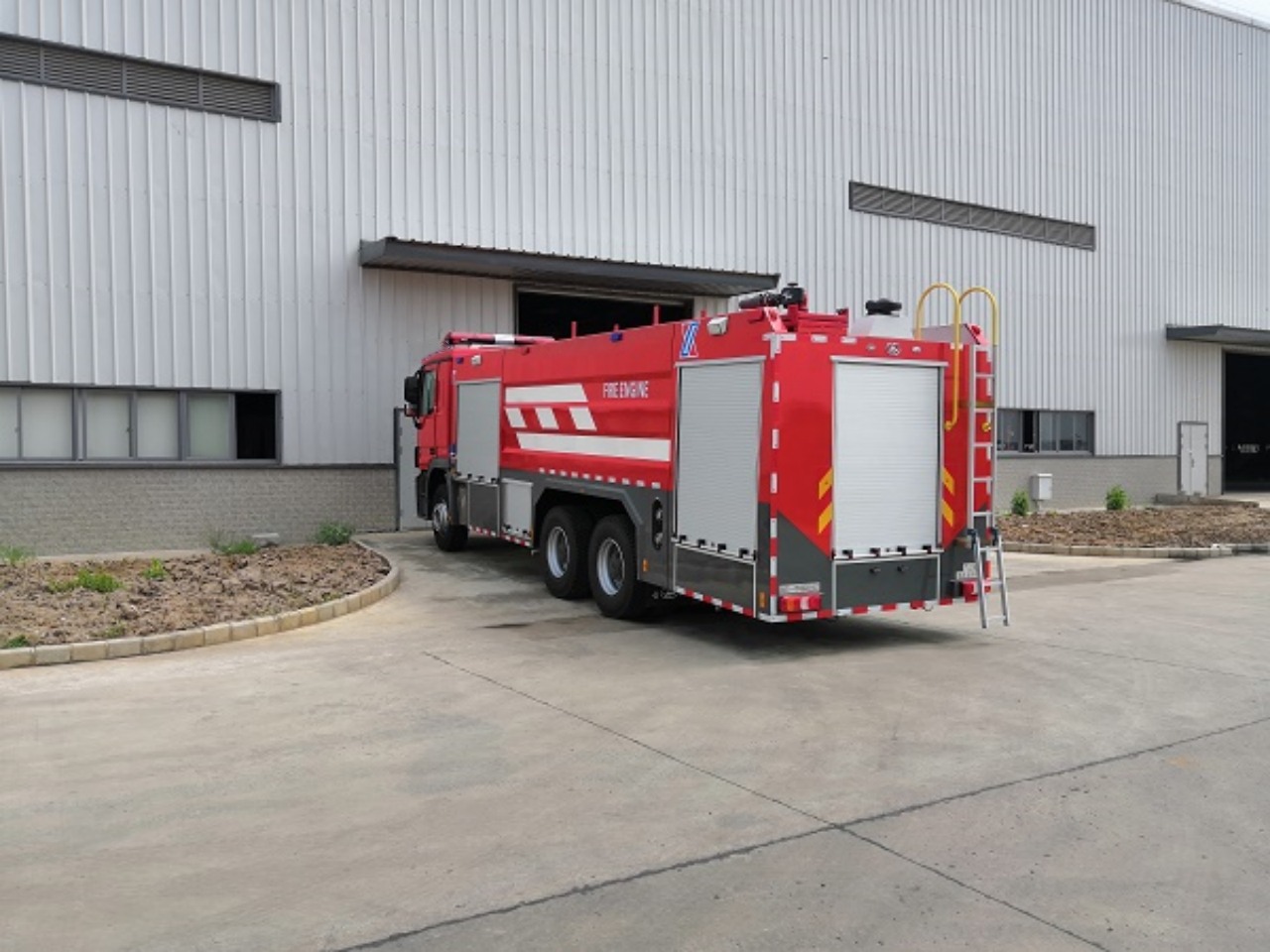
4. Speed and Mobility
Fire tenders are typically built for rapid response and mobility, with designs optimized for maneuverability in urban and suburban environments. They can reach the fire scene quickly and access confined spaces, making them ideal for city firefighting.
On the other hand, fire tankers are usually heavier and slower due to their large water tanks. Their priority is not speed but rather the efficient transportation of water over long distances. In rural settings, where water sources are scarce, fire tankers are crucial for sustaining firefighting operations.
5. Types and Variants
Both fire tenders and fire tankers come in various configurations to suit different firefighting needs.
Types of Fire Tenders:
- Standard Pumper: General-purpose firefighting engine equipped with a pump and moderate water tank.
- Aerial Ladder Truck: Equipped with extendable ladders for high-rise firefighting.
- Rescue Engine: Carries additional rescue equipment, such as hydraulic tools for vehicle extrications.
- Foam Tender: Uses specialized foam for flammable liquid fires, common in industrial areas and airports.
Types of Fire Tankers:
- Conventional Water Tender: A basic, large-capacity water transport vehicle.
- Tactical Water Tender: Combines limited firefighting capabilities with high-volume water transport.
- Airfield Water Tender: Used in airport firefighting, often with advanced foam suppression systems.
- Brush Water Tender: Designed for wildland firefighting with off-road capabilities.
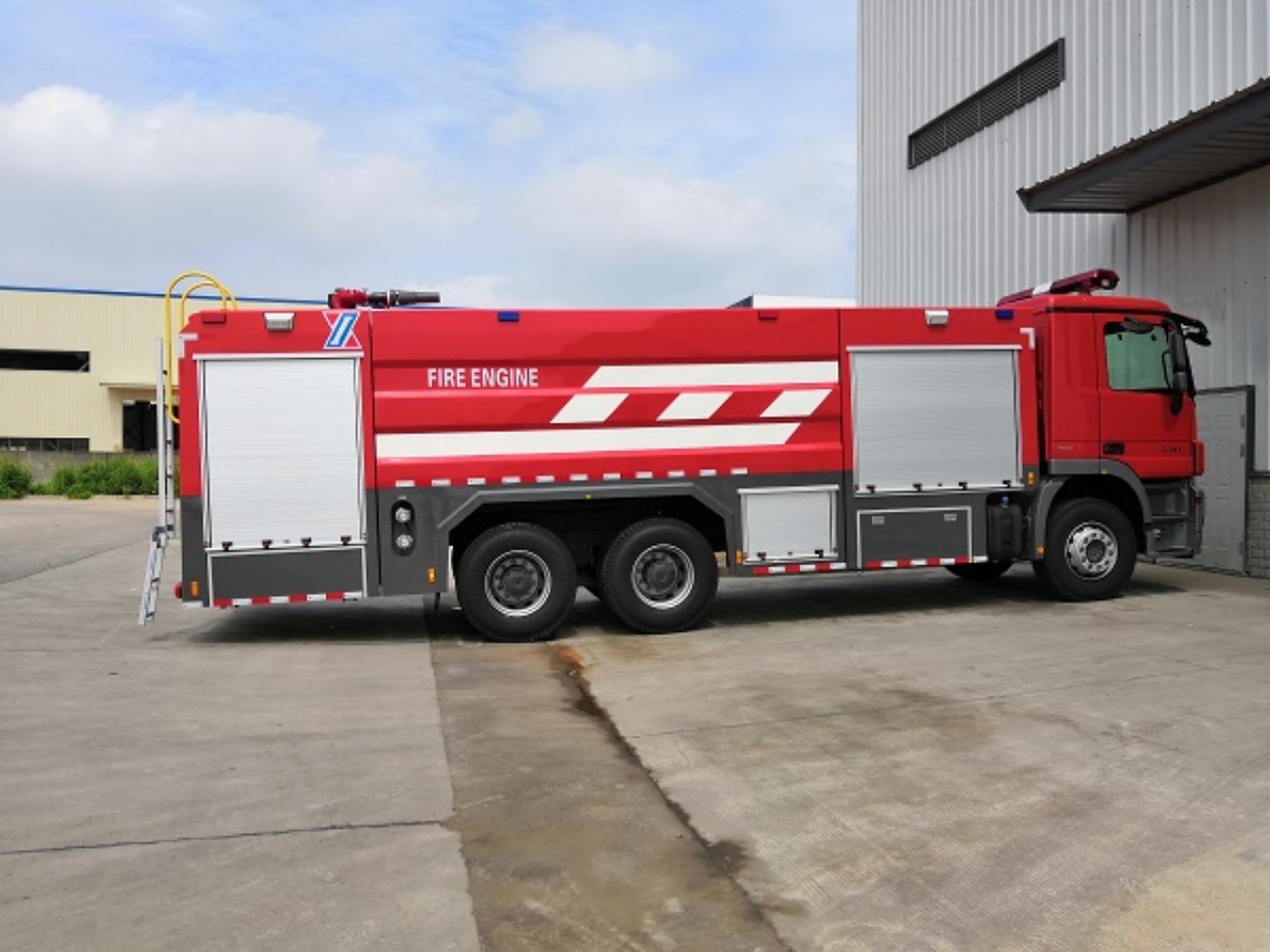
6. Firefighting Strategies and Coordination
In firefighting operations, both tenders and tankers work together to achieve efficient fire suppression. A typical response scenario in an area without hydrants may involve:
- Fire tenders arrive first and begin firefighting using their onboard water.
- Fire tankers shuttle water from distant sources to keep the tenders supplied.
- A relay system is established where tankers continuously refill and return.
- Drop tanks may be deployed to allow tenders to draw water quickly.
Urban firefighting often relies more on fire tenders, while rural and wildland firefighting depend heavily on fire tankers.
7. Conclusion
While fire tenders and fire tankers serve distinct roles, they are both crucial in effective firefighting operations. Fire tenders are frontline response vehicles designed for rapid intervention, equipped with pumps, hoses, and essential tools. Fire tankers, on the other hand, act as water supply units, transporting large amounts of water to fire scenes, particularly in areas without hydrant access. Together, these vehicles ensure that firefighters have the necessary resources to combat fires efficiently in various environments.
